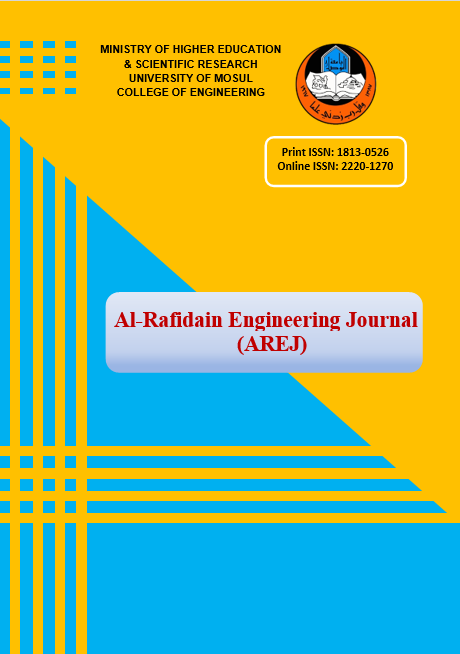Abstract
In this work, Fast Marching Method (FMM) has been suggested for Retinal blood vessels segmentation. FMM is an optimization technique; and the main advantage of the FMM is its ability to deal with branches and bifurcations without any additional computational cost. This advantage had been used in robotics to find the optimal path for the robot to move from the starting point to the goal with no collisions. Considereing the tree structure of blood vessel, I will use FMM to find the shortest bath between the optic disk and the blood vessels ends to draw the tree of the blood vessels.This method has been implemented using the M language in MATLAB R2016b. In this work local mathematical analysis has been implemented so that we can have an initial estimation of blood vessels distribution in an image in order to minimize the huge amount of noise included in retinal images and to make FMM implementing easier. FMM performance had been compared to other techniques used for retinal blood vessel detection like “Matched Filters”. The results showed that the FMM performance overcame some of those techniques and close to other high resolution methods. The FMM algorithm has been validated using the well-known “DRIVE” database and the resulting resolution ranged between 80% to 93% (depending on the noise amount in image) with iteration number between 500 to 1000 (according to the optic disk position in the image) with an average time of 0.57 seconds for each iteration which mean that the total running time is 5-10 minutes. FMM had also been validated using STARE data set and achieved a TPR of 90% for 700x605 STARE images in 15 minutes, and a TPR of 86% in 2.6 minutes when reducing image size to 350x303.
Keywords
auto segmentation.
Fast marching method (FMM)
Retinal blood vessel detection
Abstract
فی هذا العمل اقترحت خوارزمیة السیر السریع (Fast marching method-FMM) لکشف الأوعیة الدمویة فی شبکیة العین. تعتبر تقنیة FMM تقنیة أمثلة وهی تمتاز بقدرتها على التعامل مع الفروع والتشعبات بسهولة دون أیة تکلفة حسابیة إضافیة حیث تم استخدام هذه المیزة من قبل فی مجال الروبوتات لإیجاد المسار الأمثل للروبوت لیتحرک من المنطلق إلى الهدف دون أیة تصادمات. وبما أن شجرة الأوعیة الدمویة لشبکیة العین تأخذ شکلا مشابها لتعرجات الطرقات وتفرعاتها فقد وجدنا أن استخدام تقنیة FMM سیکون مفیدا ً لإیجاد المسار الأقصر بین القرص البصری وأطراف الأوعیة الدمویة بحیث نستطیع رسم شجرة الأوعیة الدمویة لشبکیة العین بسهولة. من الجدیر بالذکر أنه تم تطبیق هذه الطریقة باستخدام لغة M فی ماتلاب 2016 حیث قمنا فی البدایة بتطبیق عملیة تحلیل ریاضی موضعی للحصول على تخمین أولی لتوزع الأوعیة الدمویة فی الصورة بغیة تخفیض الضجیج الکبیر المضمن فی صور الشبکیة ولتسهیل تطبیق تقنیة FMM لاحقا ً. کما تمت مقارنة تقنیة السیر السریع مع بعض التقنیات الأخرى المستخدمة فی کشف شجرة الأوعیة الدمویة مثل \"مرشحات المطابقة –matched filters\" حیث أظهرت النتائج أن تقنیة FMM تفوقت على عدد من هذه التقنیات کما کانت نتائجها مقاربة لتقنیات أخرى ذات دقة عالیة. تم التحقق من أداء تقنیة FMM باستخدام قاعدة البیانات \"DRIVE\" حیث تراوحت دقتها ما بین 80% و93% (بحسب الضجیج فی الصورة) بعدد تکرارات یتراوح ما بین 500 تکرار و 1000 تکرار (بحسب موضع القرص البصری فی الصورة) بزمن وسطی یعادل 0.57 ثانیة لکل تکرار مما یعنی زمن تشغیل یتراوح ما بین 5 إلى 10 دقائق. کما تم استخدام قاعدة بیانات \"STARE\" أیضا فی عملیة التحقق من الأداء حیث حصلنا على دقة تصل إلى 90% من أجل صور STARE التی مقاسها 700x605 خلال 15 دقیقة ودقة تصل إلى 86% بزمن 2.6 دقیقة عند إنقاص الدقة إلى 350x303.
Keywords
تقنیة السیر السریع کشف الأوعیة الدمویة لشبکیة العین الکشف الآلی
